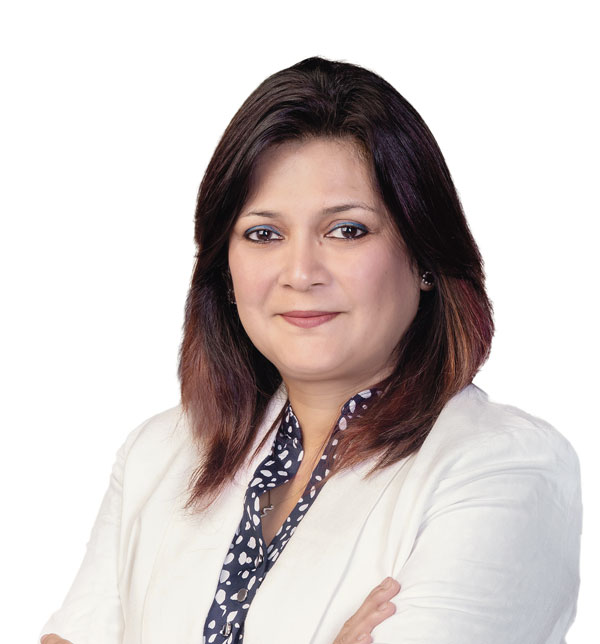Mar 09 2023 / Round the Table Magazine
Planning for 100
Topics Covered
Living longer will be expensive.
Advisors already provide a valuable service helping pre-retirees reap the rewards from a lifetime of work to pursue travel, hobbies and leisure during their golden years. But that service also should include post-retirement planning, as 65-year-olds — at least those in Organisation for Economic Co-operation and Development countries (OECD) — can expect to live 19.9 more years, according to the OECD. Such longevity requires clients to account for future health care expenses and understand that the investment strategy they used to accumulate their nest egg no longer has the luxury of time to recoup losses.
“There is a growing chance people could live to be 100, and this has major implications,” said Plabita Priyadarshi, a 10-year MDRT member from Mumbai, India. “There will be unexpected demands made on retirement savings, including ongoing debt repayment, financial support for children and long-term care. So it becomes very important when we plan for these clients’ retirements that we keep in mind the future expenditure of living longer.”
Priyadarshi’s affinity for securing quality of life for elder clients took root when she was a child and yearned to grow older, so she could become more independent, meet new people and explore places and things beyond her youthful boundaries. Since she looked up to older people, she played with older children and sought out conversations with adults and seniors to collect “the downward flow of knowledge.” Priyadarshi’s focus on attaining security for post-retirees is payback for the wisdom she accumulated from the seniors she’s always cherished.
Hazards to plan for
Inflation is one factor she heeds in her planning strategy for post-retirees. Goods and services that senior clients rely on more than younger people, such as health care, medication and personal care assistance, take a bigger hit from inflation, which reduces their purchasing power and savings faster. Consequently, a post-retiree’s financial plan can’t be too conservative and should include a mix of investments that keep pace with inflation.
Taxes are another factor Priyadarshi accounts for.
“Retirees are aware that taxes may significantly reduce their savings, but, at the same time, they are also not familiar with how to reduce their tax burdens. Most retired people don’t consider taxes to be an expense, and they never plan for that,” she said. “So, while doing retirement planning, it’s important to consider the tax environments currently prevailing and in the future. More income is needed to maintain retirees’ lifestyle. But increased income is taxed at higher rates, so I prefer to give a solution that does not incur tax at all.”
Finally, longevity can heap demands on adult children to support their aging parents over their extended life expectancy. Her post-retirement strategy promotes plans that preserve capital and are flexibly tailored to pick up some of the burden of providing long-term care should health issues arise.
“I’ve always thought that the idea of being rational for post-retirement planning is the best way to go, rather than allowing your emotions to work against your own interest,” Priyadarshi said. “People should be very rational while planning their retirement fund because it’s all about living longer.”
Investments for post-retirees
Her philosophy for post-retirement investing and helping clients “maintain the glitter of the golden age” includes the following three elements:
- Since the flow of income from working has stopped, her first recommendation is to plan the monthly return they will need every month to maintain the quality of life they had before retiring.
- Implement a wealth creation plan that is short term, say about five years, where clients have the opportunity to develop a plan that could meet their needs throughout their life. Once they create a corpus for a period of five years, she then suggests they buy annuities since, as they age, annuity returns are better.
- Invest mostly in tax-free plans for a higher and better yield and the returns handsomely beat inflation.
“For each one of us, this particular segment of retired individuals is a great opportunity to increase our business, and helping them to plan their money is also a noble cause,” Priyadarshi said. “This makes retired individuals contributors in growing the economy and sustains them comfortably through economic changes and headwinds.”



![Elevating your financial advisory journey: how the right mentor can propel your success to new heights [Surabhi Chaudhary]](https://www.mdrt.org/globalassets/digizuite/32702-en-updated_-india_video-interview_surabhi-chaudhari-thumbnail.png?height=268&crop=0,0,268,268)

![Beyond finance: Individuals outside the financial profession every financial advisor should learn from [Nirmal Debnath]](https://www.mdrt.org/globalassets/digizuite/32634-en-india_written-interview_nirmal-debnath-thumbnail.jpeg?height=268&crop=0,0,268,268)
![How to tailor financial advice to fit the unique needs and goals of your clients [Merryl Baptista]](https://www.mdrt.org/globalassets/digizuite/32635-en-india_written-interview_merryl-baptista-thumbnail.jpeg?height=268&crop=0,0,268,268)
![Anticipating the financial needs of Gen Z clients and advising prospects towards adequate insurance cover [Komal Atal]](https://www.mdrt.org/globalassets/digizuite/32632-en-india_written-interview_komal-attal-thumbnail.jpeg?height=268&crop=0,0,268,268)
![Enhancing your offline persona through cultivating an online presence: Tips and strategies [Khushboo Bajaja More]](https://www.mdrt.org/globalassets/digizuite/32630-en-india_written-interview_khushboo-bajaj-more-thumbnail.jpeg?height=268&crop=0,0,268,268)
![A former flight attendant's sky-high client servicing standards [Beth Daffodil Uy Tan]](https://www.mdrt.org/globalassets/digizuite/32577-en-ph-_video-interview_a-former-flight-attendant's-sky-high-client-servicing-standards_daffodil-tan-thumbnail.png?height=268&crop=0,0,268,268)



![Overcoming a financial advisor’s internal self-doubts [Cedrick Cruz]](https://www.mdrt.org/globalassets/digizuite/32509-en-ph_written-interview_-handling-a-financial-advisors-self-doubts-cedrick-cruz-thumbnail.jpg?height=268&crop=0,0,268,268)